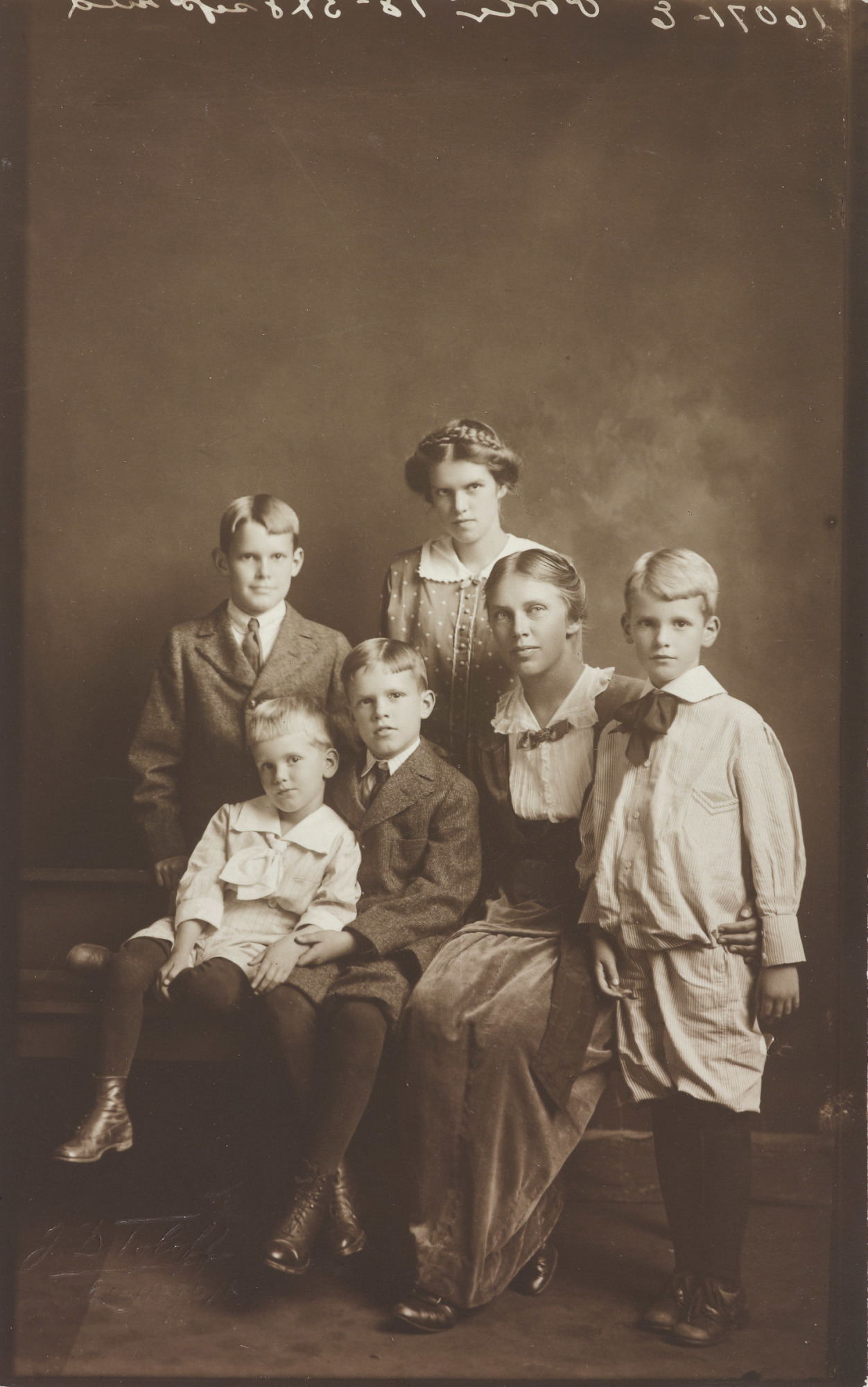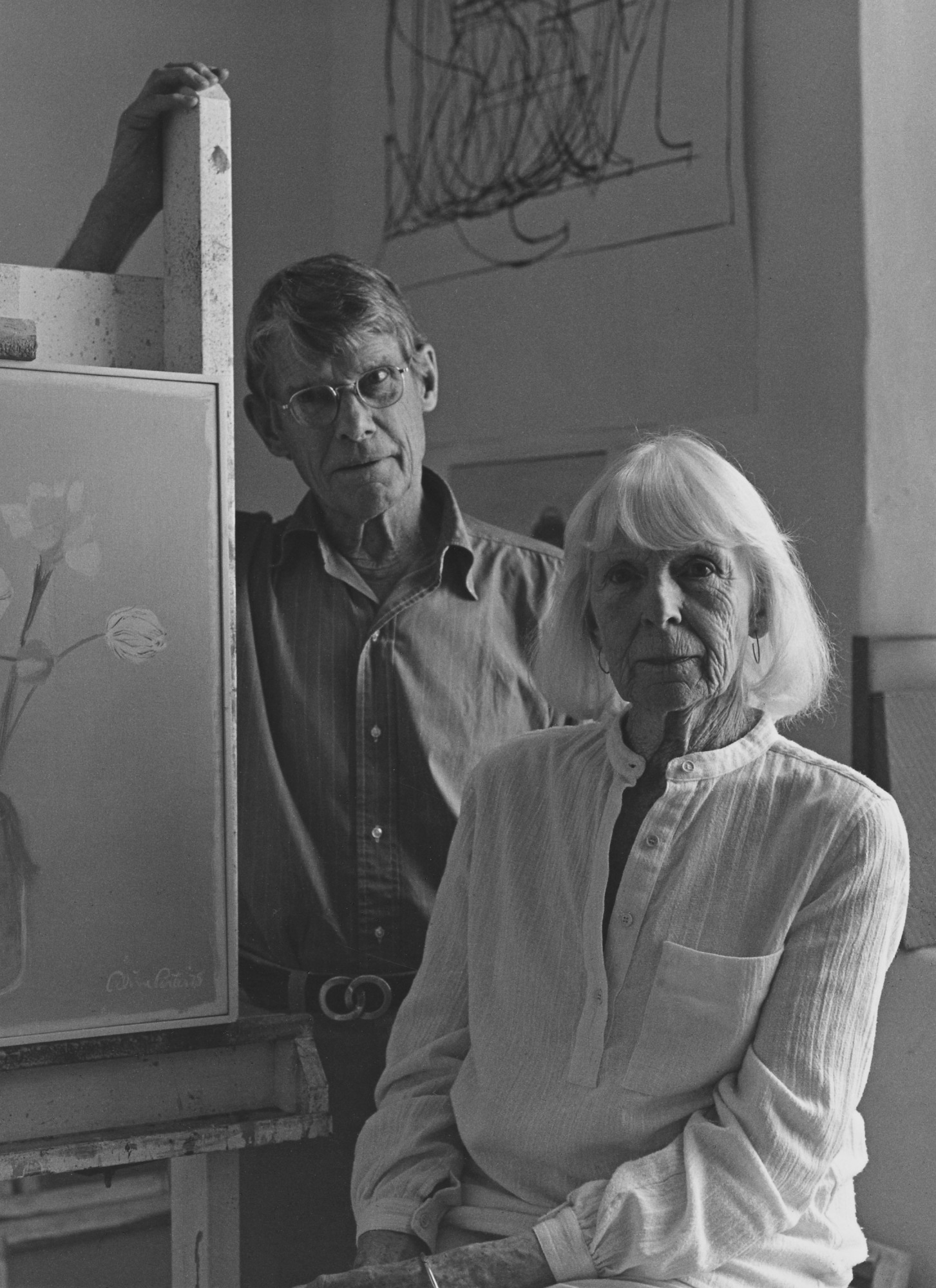Biography
Eliot Furness Porter was born in 1901 in the Chicago suburb of Winnetka, Illinois, the second of five children in an upper middle-class family. His father, an amateur architect and natural history enthusiast, managed the family’s Chicago real estate and infused in his children a love of learning and the sciences. His mother, a Bryn Mawr graduate, shared her active support for liberal social causes. Given his first camera in 1911, Porter immediately challenged himself to photograph birds, first around his Winnetka home and then at the family’s summer retreat, Great Spruce Head Island, in Penobscot Bay, Maine. He was sent east for high school, and then followed family tradition by enrolling at Harvard, graduating with a BS in chemical engineering in 1923 and a medical degree in 1929.
Porter took up a career as a biochemical researcher at Harvard. But he could never quite let go of his love of photography. Spurred on by support from his brother, the realist painter Fairfield Porter, and introductions in the mid-1930s to the acclaimed artists Alfred Stieglitz and Ansel Adams, he found himself increasingly photographing the northern New England landscape. In 1938, Stieglitz offered to exhibit some of these black-and-white photographs, along with several images that Porter made on an excursion to Austria, at his important New York City gallery, An American Place. That solo show induced Porter to quit his medical career and take up photography full-time.
Although he had previously photographed in black and white, in 1939 Porter took up color to create more accurate photographs of birds. Soon he added other woodland subjects to his repertoire and became the first established artist-photographer to commit to exploring the natural world almost exclusively in color. Over much of his career, black-and-white photography continued to set the artistic standard, and he had to fight his colleagues’ prejudices against color. But in 1962, he gained a major boost when the Sierra Club published In Wildness Is the Preservation of the World. That immensely popular book, which combines his evocative photographs of New England woods with excerpts from the writings of Henry David Thoreau, revolutionized photographic book publishing by setting new standards for color printing and proving the commercial viability of fine art photography books. Its success set Porter on a lifelong path of creating similar photographic portraits of a wide variety of ecologically significant places the world over.
Eliot Porter at work
Slide Controls
Slides
Building on the success of In Wildness and subsequent photographic celebrations in Utah, Maine, and the Adirondacks, Porter moved increasingly farther afield. He published books on sites including Baja California, Mexico, the Galápagos, East Africa, and Antarctica, all of which drew his attention because of their ecological diversity and the environmental stresses they faced. In the late 1960s, he added cultural topics to his agenda, eventually completing photographic studies of classical Greek ruins, ancient Egyptian sites, and modern China. He published 25 books and was working on several more when he died in 1990.
Porter never gave up his passion for birds, continuing to photograph them almost every spring until failing health in the 1980s prevented that often strenuous work. He always remained fascinated by the scientific and ecological underpinnings of his subjects, be they animal, plant, or mineral. In the 1950s, he would at times set himself such tasks as photographing newborn spiders or the life cycle of a mosquito. Lichen was one of his favorite subjects; he sought it out wherever he traveled. The publication of James Gleick’s book Chaos: Making a New Science (1987) led him to review his life’s work in recognition of his own implicit illustration of Gleick’s influential theory.
In the 1940s and 1950s, when lines between art and natural history museums were more fluid, Porter was just as likely to show at the American Museum of Natural History as the Museum of Modern Art. Yet his fascination with nature and environmentalist ethics never superseded his passion for art. Throughout his life, he remained committed to making and exhibiting meticulously rendered dye imbibition prints of his photographs. Art museums’ gradual acceptance of color photography in the 1960s and 1970s led to a regular stream of monographic exhibitions for Porter at both large and small venues. Highlights include Intimate Landscapes (1980), the first solo show of color photographs presented by the Metropolitan Museum of Art, and major retrospectives by the Art Museum of the University of New Mexico (1973) and the Amon Carter Museum of American Art (1987). Porter died in 1990, bequeathing his archive to the Carter, which holds over 9,000 prints as well as almost 90,000 negatives, slides, and transparencies; copies of his books, portfolios, and albums; the Eliot Porter Papers; his 1,100-volume professional library; and his photographic equipment.







